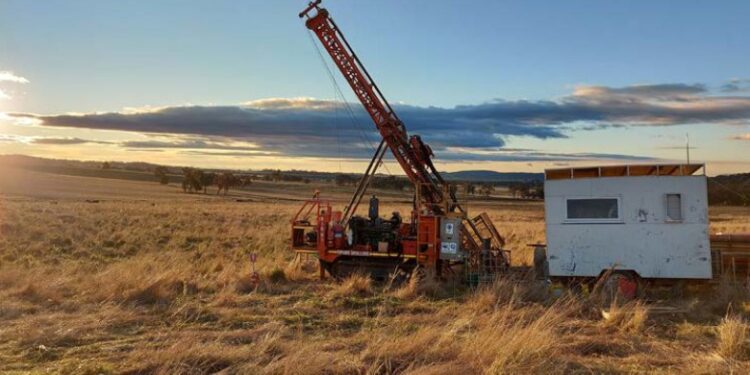Silver Mines Ltd (ASX:SVL) has restarted drilling at its Barabolar Project, just 10km from Bowdens in NSW, the largest undeveloped silver project in Australia and one of the largest in the world.
Highlights
- The initial programme is expected to comprise at least 2,000 metres of diamond drilling.
- The Barabolar exploration project lies within the highly prospective Macquarie Arc, which also hosts world-class mineral systems such as the Cadia-Ridgeway porphyry copper-gold deposit.
- The project area comprises 1,950 sq. kmof titles covering approximately 80km of strike of highly mineralised multiple target styles and mineral occurrences.
- These are similar to Bowdens copper-gold targets, and its high-grade silver-lead-zinc epithermal and volcanogenic massive sulphide (VMS) systems.
- The drilling at Barbolar comes as Silver Mines progresses the final stages of development approval for Bowdens, a two-million-tonne-per-annum open pit operation that would have an initial mine life of 16.5 years producing about 66 million ounces of silver, 130,000 tonnes of zinc and 95,000 tonnes of lead.
“At the outset of Covid-19, we deferred work at Barabolar and focussed on areas with our own freehold land in and around the Bowdens Silver Project,” Managing Director, Anthony McClure, said.
“It is great news for the Company to recommence drilling activities at the exciting Barabolar Project given its considerable anomalism on surface with significant mineralised porphyry potential. We currently have three diamond rigs continuing at Bowdens Silver and one at Barabolar.”
Drill Targets
The company has generated numerous high priority drill targets from multiple exploration datasets around the Mt Laut pyrophyllite quarry and Crossroad prospect areas.
Immediately within this area are silica-sericite flooded volcaniclastics and volcanics of andesitic to dacitic composition with pyrite and gossanous quartz veins.
Major west dipping faults (interpreted from digital elevation models and surface measurements) are likely the fluid pathways to exposed zones such as the pyrophyllite quarry and other prospects further to the east.
In 2019, the company completed a gravity survey to determine whether a clear intrusive signature exists within the Barabolar Project area.
The Crossroad target represents a potential intrusive source to alteration and mineralisation as the gravity data has identified numerous “low” responses with the standout target being coincident with a magnetic high and potassium anomaly (radiometric data). The magnetic high is potentially a result of high temperature potassic alteration (biotite-orthoclase-magnetite) within an intrusion. This represents a priority target for deep drilling.
Machine Learning (ML) algorithms, applied to the company’s extensive surface sample database and geophysical/remotely sensed datasets, have also identified areas within the Barabolar Project as being outliers geochemically within the company’s broader tenement holding.
These areas are Cringle and Mt Laut through to Crossroad, highlighted in both predictive models and in sampled data. Significantly, when multivariate outlier analysis is performed using alkaic and acidic zone elemental enrichment around porphyry systems as previously defined, the outliers are situated around significant geophysical responses (magnetic high and gravity low).
For further information please visit: https://www.silvermines.com.au/












